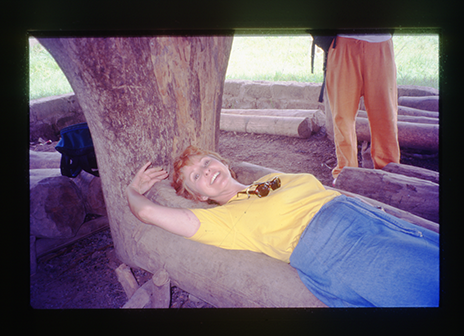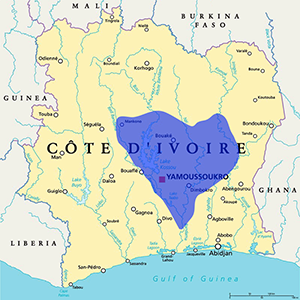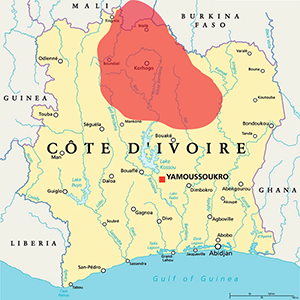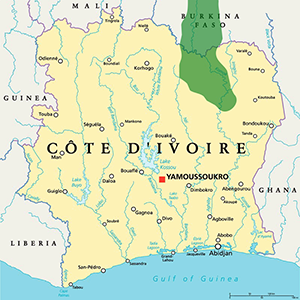To Be Seen: Documenting the Art of the Ivory Coast

The organization of vision is one of the defining features of galleries and museums. Curators and designers strategically manipulate an object’s placement, lighting, sight lines, framing, and label style to affect their visitors’ perception of the works on display. These choices are an important part of how visitors connect objects to feelings of curiosity, wonder, and resonance, but they also place a kind of lens over the object—magnifying some features while diminishing others. The curator’s lens joins the artist and collector to interpret why the object is meaningful and how it should be viewed.
This exhibit was curated by the students in Dr. Andrew Gurstelle’s “Introduction to Museum Studies” course in Fall 2022. Using a collection of objects from Ivory Coast acquired by former Lam Museum curator Beveryle Hancock, the students researched traditional African arts and how they have been collected, exhibited, and interpreted in museums. They also wrote the labels that explain how each object is meant to be seen.
The photographs featured in this exhibit were scanned from Beverlye’s slides.
About the Collector

In 1997, Lam Museum curator Beveryle Hancock visited Ivory Coast to collect new artworks and artifacts for the museum. The museum had replicas and reproductions of many objects, but these were viewed as inauthentic, modern pieces—though looking the same, they had a very different context. Beverlye’s visit was part of a larger group organized by Drew University which traveled with several respected experts in African art and was accompanied by Ivorian interpreters.
In a rare opportunity, Beveryle was given funds to purchase finely crafted traditional pieces, often directly from the artists. Guidance from the experts, such as Dr. Philip Peek and Dr. Jerry Vogel, ensured visits to top-tier artisans and gave her access that other buyers did not have. For example, Dr. Vogel helped her acquire the Poro Society axe and the fly whisk, even though these pieces had been commissioned for someone else. In another case, she name-dropped Dr. Vogel to convince a merchant to sell her the older, colonial-era spirit spouse instead of a more modern one.
Seeing the cultural context of the objects in use was very important to Beverlye. During the trip, artisans revealed the intricacies of pottery-making and ironworking traditions, and seeing cloth being woven and decorated highlighted gender dynamics in craftsmanship. Everywhere she went, artwork, tools, and raw materials offered glimpses into cultural practices and beliefs. Beverlye collected 49 objects in total, assessing what was fit to be seen by balancing the advice of experts, artists, and her own connoisseurship.
Explore the sections of this exhibit below



This exhibit was on display from March 26 to August 16, 2024.

